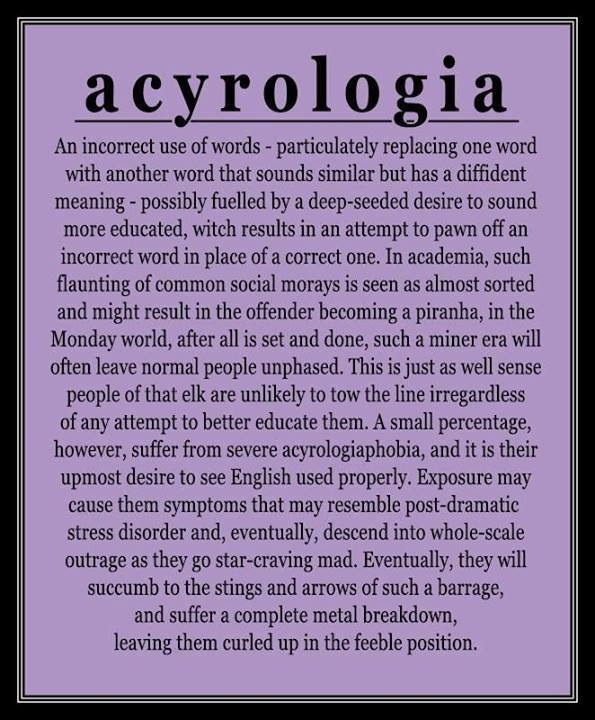That’s not what I meant. Or is it?
September 21st, 2014 at 5:41 pm (Vocabulary)
You may have encountered this great example of acyrologia:

(I could not find an original source for the image, unfortunately!)
“Acyrologia” is kind of hard to pronounce. It is also rather obscure. A search in the online Webster’s dictionary does not find it! The link above to a definition takes you to a dictionary of rhetoric (Silva Rhetoricae, the Forest of Rhetoric). It defines acyrologia as “An incorrect use of words, especially the use of words that sound alike but are far in meaning from the speaker’s intentions.” Sometimes these things slip out (malapropism) and sometimes they are done on purpose (puns, the practice of which is known as paranomasia). I’d guess that Spoonerisms are another kind of acryologia.
I was amused to find that the Silva Rhetoricae characterizes some of its terms by their *ethos* (“persuasive appeal of one’s character”). For example, “Acyrologia erodes the ethos of the speaker, for it portrays his/her ignorance.” It also rates them by style: “Using acyrologia reflects poor diction (word choice), thus demonstrating a low level of style.”
There is also cacozelia, in which you use improper or overly erudite words to impress your audience or to make things sound worse than they are. The Silva Rhetoricae cites an example from Seneca: “This is an adultery against the state, to have sex under the trophies of Miltiades.” Adultery. Really?
Do you have any favorite examples of acyrologisms?
